Q&A with Jacob Martinez
Founder and Executive Director of Digital NEST
Interviewed by: Darío León, Research and Community Coordinator
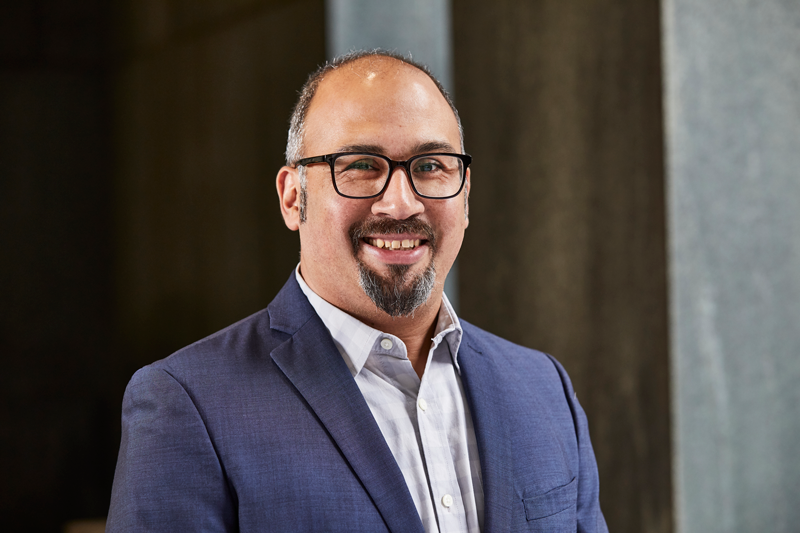
In 2014, Jacob Martinez founded Digital NEST—a technology workforce development hub providing youth in underserved communities with high-demand technology skills, mentoring and hands-on experience so they can secure well-paying jobs. Jacob plans to open a Digital NEST in overlooked communities in key regions across California and to prepare youth to transform them into thriving economic centers. Prior, he spent nearly 10 years running a successful program funded by the National Science Foundation, encouraging underrepresented Latina girls to study computer science. He is a 2020 recipient of The James Irvine Foundation “Leadership Award” and a 2018 Draper Richards Kaplan Foundation “Entrepreneur Fellow.” Beginning in 2021, Jacob will serve as an external special adviser to UC Santa Cruz Chancellor Cindy Larive, bringing his insight on economic opportunity, community empowerment and digital innovation. He is also an alumni of UC Santa Cruz, earning his degree in Ecology and Evolutionary Biology in 2004.
Tell me a bit about yourself.
I grew up in Los Angeles but I moved around a lot. I went to high school and my first year of college in Texas and I hated it. Being an L.A. boy in Dallas wasn’t a good mix. At the age of 19, I left for San Francisco and attended community college. One of my transfer requirements was to take a science course. The course gave me the opportunity to go hiking around the Bay Area and I loved it. I love hiking and being outdoors. I thought to myself, “the sciences are amazing!” When I transferred to UC Santa Cruz I told my counselor I wanted to major in biology. I quickly realized that it wasn’t like the course I had taken. I had to take physics, chemistry, calculus and other courses I didn’t like. At that point, I was already four years into the college experience so I told myself I just needed to get through it. It took me three years to get through UC Santa Cruz even after transferring, but I did it and earned my degree in Evolutionary Biology.
After graduation, I was making no money. I asked some people that I knew in the science departments at UCSC if they knew of any job opportunities. They did and I started working for a diversity program on campus that was trying to get more students of color into the sciences. It was then that I landed in this passion of working with people of color, while still being rooted in science. After that, I became an assistant advisor for the Biology Department at UCSC and then worked for the MESA–Mathematics, Engineering, Science Achievement–program conducting outreach for the sciences to schools in Salinas, North Monterey County, and Watsonville. It was at that moment a nonprofit reached out to me. They heard about the great work I was doing with MESA and they wanted me to conduct research on getting more underrepresented youth of color into the sciences, into technology specifically. I saw millions and millions of dollars being pumped into tech education, but the needle wasn’t moving even with programs I was working on. I saw all of the economic opportunities that STEM provided, yet I saw the lack of diversity. I thought about methods of getting those economic opportunities to poor, brown folks. So that launched my career and I’ve been doing it ever since; trying to get people of color more money in their pockets so they can take care of their families.
What led you to do this type of work?
I was entering my freshman year of high school, when my dad moved us out to Texas for a job opportunity. My parents were able to buy us a really nice home and my dad was extremely proud; being from México and providing his family a good home was extremely important to him. What we didn’t know was that we were living in an affluent community. All of my neighbors in L.A. were either Filipino or Mexican and now in Texas, all of my neighbors were white. I remember my first day at school looking like a deer in headlights when the bell rang and all of the kids came out; they were all white. I was one of only 10 people of color in my graduating class of 300. It was the first time in my life I saw what privilege does to young people. For all of the kids in my grade the question wasn’t, “Are you going to college?” The question was, “What college are you going to?” I had peers going to Notre Dame, Duke, University of Texas, Northwestern, and all across the country. I realized for the first time that this is what being privileged was. For some of these kids, it seemed as if they were walking on clouds and their futures looked so clear and bright, even the kid that was “worse off” was still going to go work for his parents company after graduation. When I moved to San Francisco, I lived in the Mission District and was thrown back into the environment that I saw in L.A. I lived with people who were struggling and trying to get by. I think that experience, being in Texas then moving to San Francisco, made it clear what I wanted to do for the rest of my life without me really knowing it. I wanted to give people of color that same sense of their rights; that they had a right to these things too.
Can you describe the history and the mission of Digital NEST?
For years, I took kids from Watsonville to Silicon Valley on field trips. I would take them to places like Google, Facebook, and Apple. In 2013, I had this chance encounter with a young person who was struggling to get access to technology and I realized then that I’ve been taking kids to Silicon Valley for years, yet there are still kids in this community having access issues. I thought, “What if I brought Silicon Valley to Watsonville and communities like Watsonville where there is an abundance of diverse talent but lack of access, opportunity, and resources?” Silicon Valley spends millions of dollars in getting the best of everything. So I set out to do just that with the same mentality of pumping resources into underserved communities and use that to give youth the best environment, equipment, and staff. My goal was to bring in big money. I wanted to shift the traditional state of mind of nonprofit funding. Silicon Valley, the tech industry, wealthy families, and wealthy communities distribute resources; why can’t we? In 2014, I was talking to an investor that I knew and shared this idea with him. He thought it was brilliant and agreed to do it. He put down $100,000 and all of a sudden, I launched Digital NEST. That was 2014, and six and a half years later we’re now thriving in Watsonville, Salinas, and we just expanded into Gilroy.
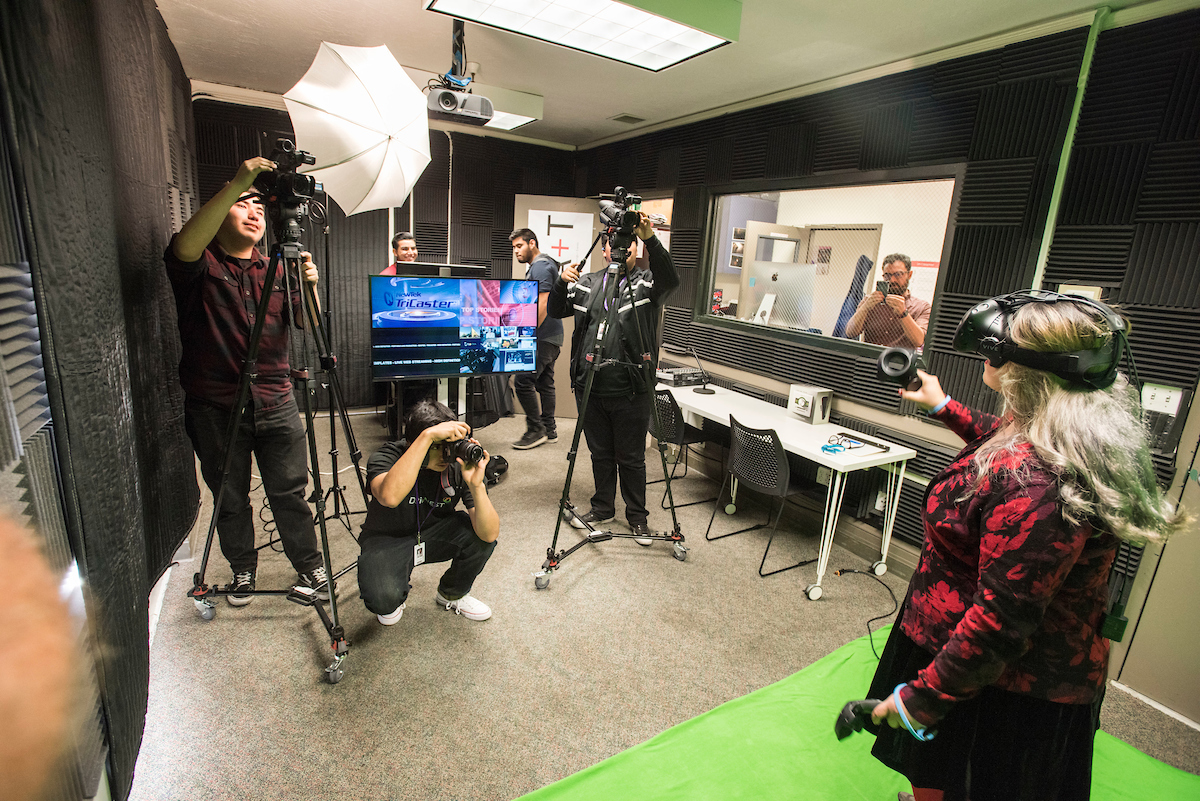
What services does Digital NEST offer the community?
At the core of Digital NEST is this concept of space and access. Let’s bring that Silicon Valley model of a physical environment to communities. In Watsonville, we have a 4,500 square foot facility filled with cool furniture, free food, places to work in teams, office spaces, conference room space, a recording studio, and classrooms. At our Salinas location, the building is twice as big, about 8,000 square feet. Access is the entry point of what we do. It would normally be the biggest piece of an organization but ours is the programming and the building of networks.
We offer three career tracks. The first is Web and IT, with subjects like traditional coding and web design. The second is Digital Arts and Technology that is focused on graphic design and videography. The third is a program we call PPL–People, Projects & Leadership–which is centered around project management and event coordination. The Digital NEST is becoming a space that gives people identity and opens doors for job opportunities. We have many young people that move back home with this dream and this promise that they were told their entire lives to go to college, do well, and now they find themselves not being able to find jobs. We’re focused on opening access to opportunities, social networks, and social capital that they haven’t had before.
How has this work changed with COVID-19?
I remember discussing in the second week of March 2020 that we should keep an eye on this COVID-19 thing since it looked like it was starting to pick up. By that weekend I was telling everyone not to come in, we were shutting down for the next two weeks, and not to worry, everyone was going to get the two weeks paid. I then went into scramble mode with my board about the rumors that philanthropy was going to button down funding and that funding was going to be redirected to health and small business support. We talked about our leadership team taking a 10% pay cut and keeping as many people employed as we could. By the end of that second week, we started seeing a flurry of requests coming into Digital NEST. The local health clinic, Salud Para la Gente, was asking us to produce COVID-19 videos and material in Spanish. We had teachers reach out to us asking if we could help them produce content and activities for their virtual classrooms. We had college students say that they needed computers since their colleges weren’t supplying them with any, so we deployed all of our machines. We heard students say they wanted to still be involved so we switched all of our programs online.
What we saw by the end of that first month was that Digital NEST quickly became an essential service. In response to the large number of requests, we launched a new program called NEST Corps. We mobilized our youth to be drivers of solutions in their communities. Instead of us offering the community programming, we asked how our youth could help. They started producing content in Spanish around COVID-19 and launched a website to help small businesses get online. I think that it was a good decision to not worry about the money and instead respond to the community. We would figure the money situation out and if we didn’t, at least we were going down helping the community. But the opposite outcome happened. We had people take notice of the actions we were taking and offered to help us keep going financially. We did the opposite of what many other nonprofits did, and unfortunately they continue to struggle financially; some have even gone under. They cut staffing, they cut programming and we were saying the opposite. We were saying, we need to do more of what the community needs. In fact, many regions reached out to us and asked about bringing Digital NEST into their community. They are starting to realize that they need an organization in the community that can respond quickly and that have highly skilled youth; providing another type of work force. I think post COVID-19, we’re going to be stronger.
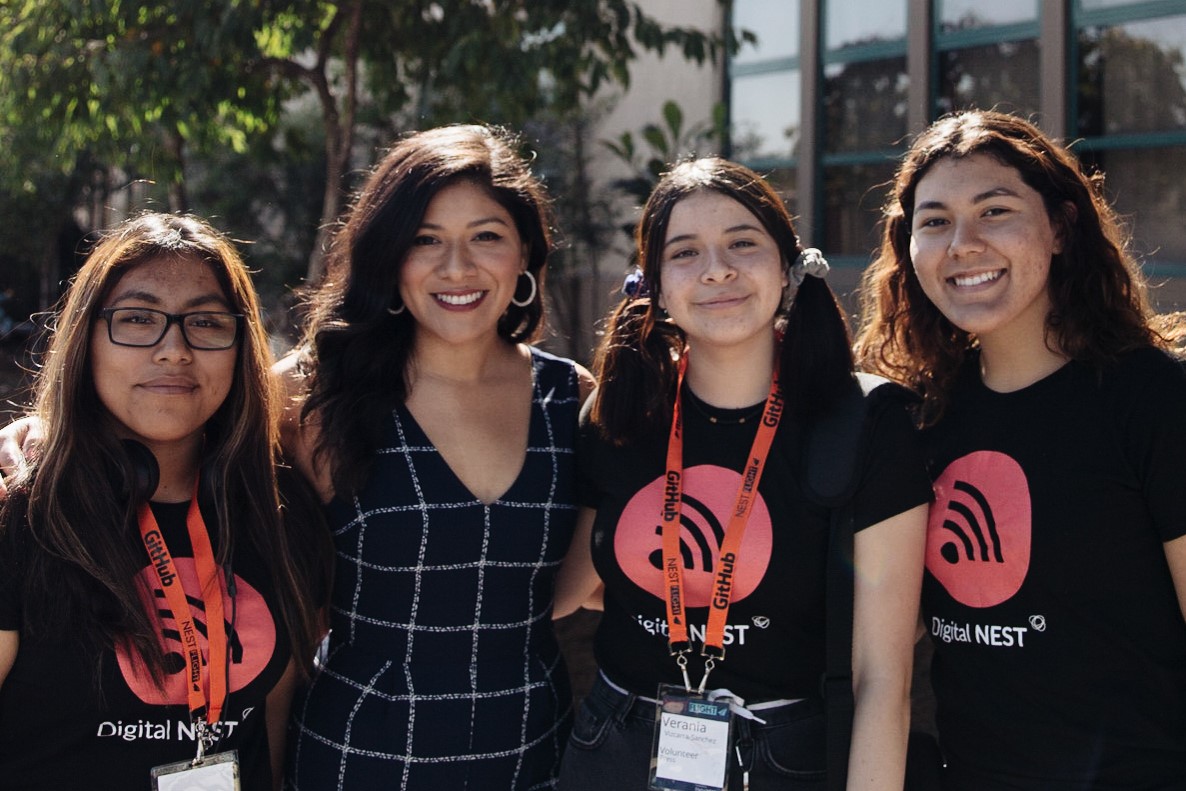
The Digital NEST and UC Santa Cruz have collaborated on several projects. What elements do you think make up a successful collaboration with the university?
I did poorly in high school because of all of the challenges I faced. When I went to community college, I did well for the first time in my life. I had the option to transfer to many schools, but I chose UC Santa Cruz because of the roots in social justice and the unique feel of the campus. I’m involved in the alumni council and lately I’ve been doing work with the chancellor. I’ve been trying to figure out why UCSC isn’t getting more funding and resources. I’ve come to the conclusion that it’s because we don’t have big time sports or anything to rally people around. But we could rally people around social justice with some of the work that we’ve done and the organizing and collaborations that have happened. I always fall on the Everett Program as an example of what’s possible at UCSC. The Everett Program is a blend of giving people the innovative technical skills along with the people skills. That to me is the secret to success for our young people. The Everett Program is at the top of that unique UCSC mentality and approach, but you can find it in all of the other departments on campus as well. Even in some places you would not expect, like in engineering or the sciences, you still feel that root of collaboration. A desire in solving the problems of the world and helping people; not just be in it for a buck. Even though UCSC has changed over the years, you still find that desire. It’s embedded deeply in the culture.
With the recent growth into Salinas and Gilroy, what do you see for Digital NEST in 2021?
We’re growing! 2021 for us is about building the infrastructure to grow even beyond the Monterey Bay region of Watsonville, Salinas and Gilroy. The vision is that in the next five years to have nine centers that surround the Bay Area. We’re doing a hub and spoke method of expansion. For example, Watsonville is the hub and Salinas and Gilroy are the spokes. So the next region we’re looking at is the San Joaquin Valley, possibly Stockton, and the North Bay in the Santa Rosa/Napa area after that. If we can be successful in that goal then we could collectively put pressure on Bay Area industries, one of the wealthiest regions in the world and full of economic opportunities, to hire regionally and look at diversity differently. One thing I will say is that we’re never going to be in an urban area. That’s part of the vision; we’re not in immediate urban areas or their surrounding communities. One reason being that urban areas already get a lot of investment. There are major needs in urban areas, but there are also a lot of programs that exist there. No one focuses on the communities outside of the urban areas. What we’re also seeing is that due to the prosperity of the Bay Area, gentrification is happening rapidly and is being felt everywhere. We’re seeing it here in Watsonville. A guy that lives across the street from me is a Google employee. Pre COVID-19, he only went into the office two days a week. Now, tech companies like Twitter have announced that their workers could work remotely indefinitely, which means it’s going to get worse in the areas surrounding the Bay Area. Where are the people in the Bay Area going to be pushed to? They’re getting pushed to Stockton, Tracy, and other areas where the cost of living is low. Those are the communities that we want to start building the infrastructure in so that we can put our stake in the ground, form a wall, push back and have a mentality that we are here now and we’re not getting pushed out further.
What advice would you give students that want to get involved and work in a community-based organization like Digital NEST?
Get involved as early as you can. Students have a lot of great opportunities because Santa Cruz County has many non-profits and is a small county. Getting from UCSC to Watsonville, even without a car, is an hour bus ride so it’s still manageable; it’s not something that is out of the question. Organizations in the area have a lot of needs because we can’t afford to track and retain talent due to the high cost of living. A lot of nonprofits are archaic in the way they operate and don’t have the resources to push and drive technology or innovation. Students have the skills and knowledge to do that. I would recommend taking advantage of the opportunities here in your community. Also, for students at UCSC, connect with programs like the Everett Program and the Career Center, which are doing great work. It’s not all about grades anymore, unless you want to be a doctor or a lawyer. If you want to start working after college, pass your classes and network.


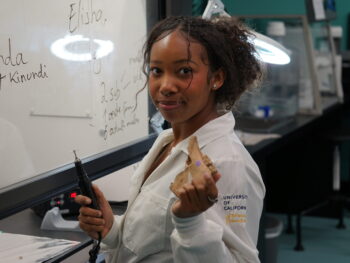
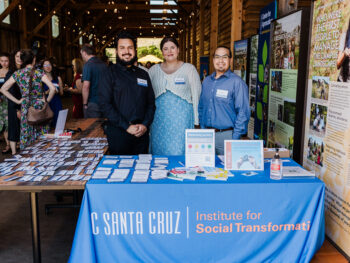
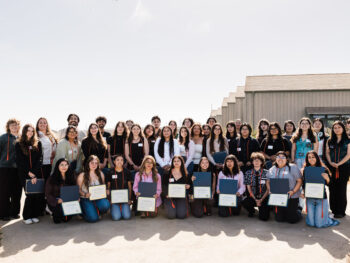

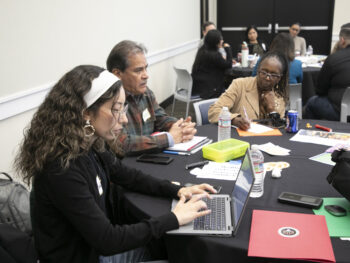
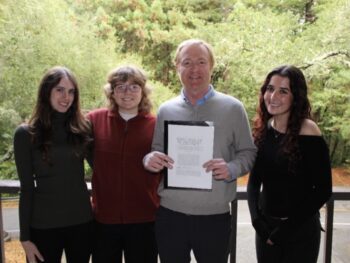
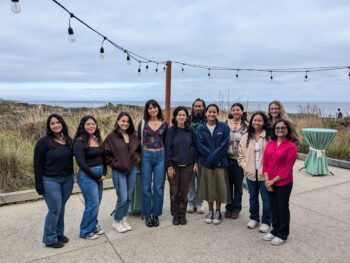
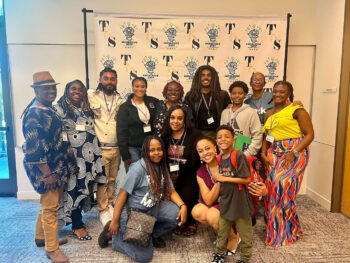
 Suddenly Distant: Teachers’ Work During COVID-19
Suddenly Distant: Teachers’ Work During COVID-19
